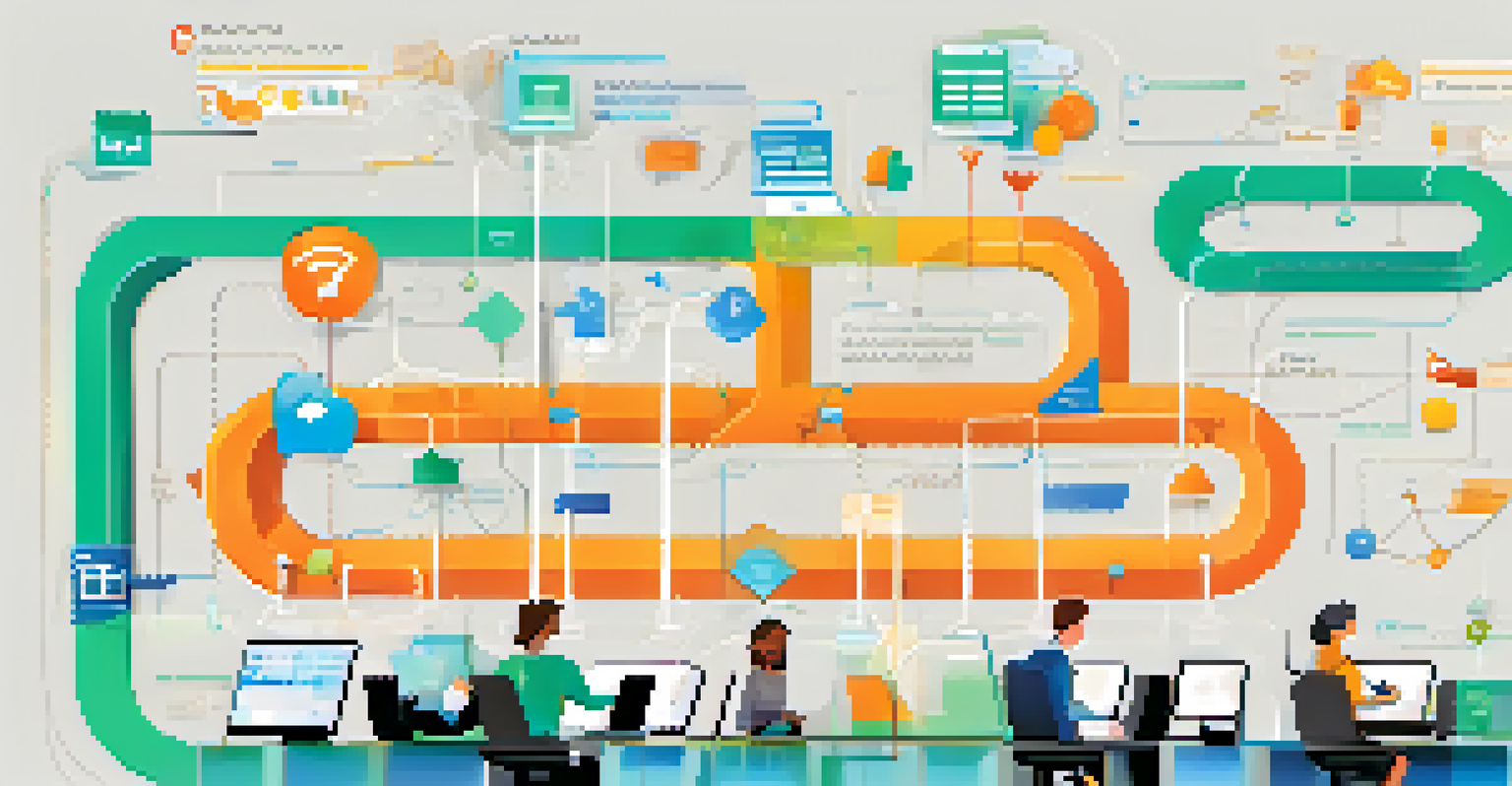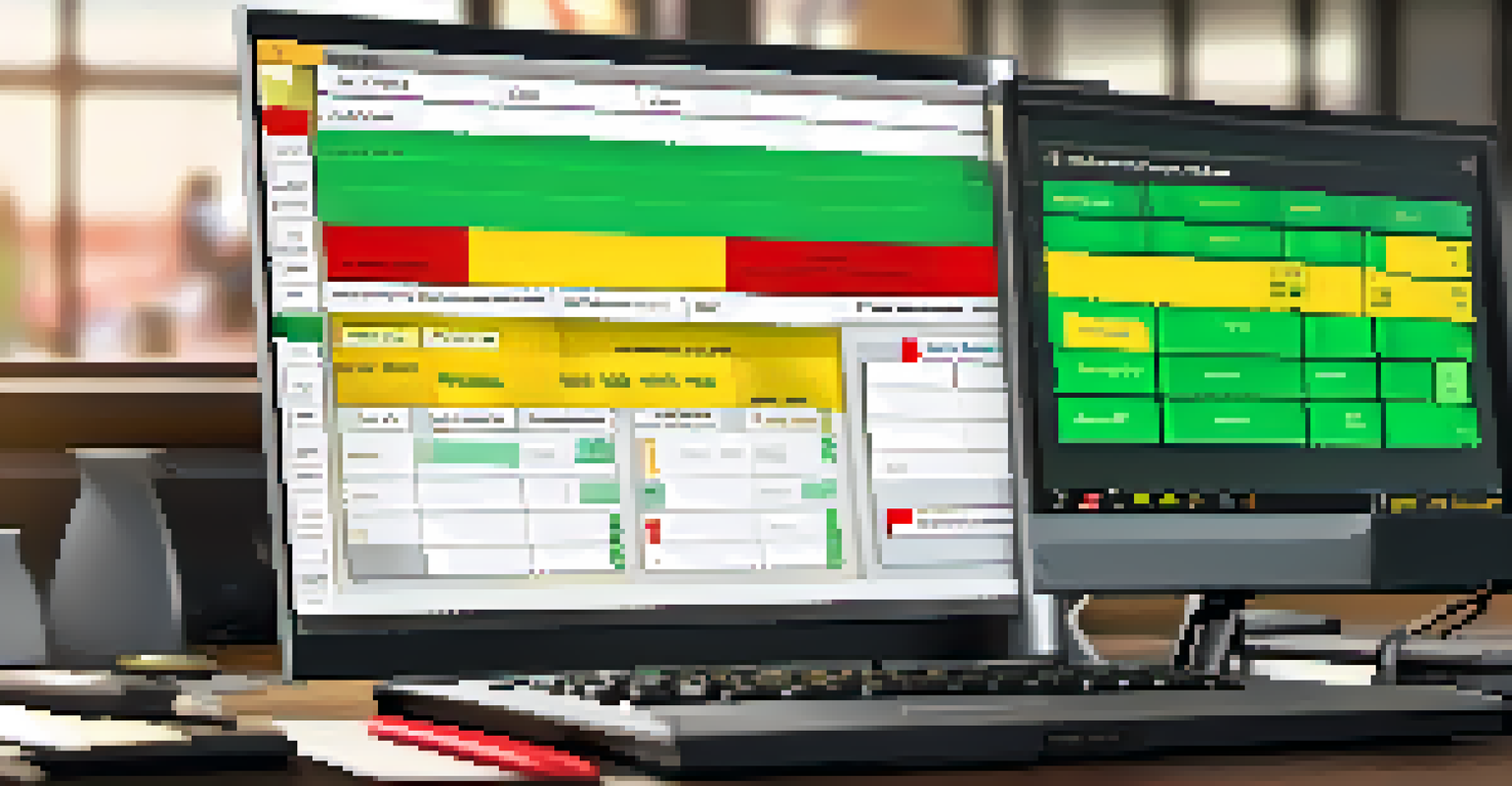The Benefits of a Service Desk in ITSM Frameworks

Understanding the Role of a Service Desk in ITSM
A service desk is the central point of contact for all IT service-related inquiries and activities. It plays a crucial role in IT Service Management (ITSM) frameworks by ensuring that users receive timely support. This centralized approach helps streamline communication between IT teams and users, making it easier to address issues and requests.
The goal of IT service management is to ensure that the right IT services are delivered to the right customers at the right time.
Within ITSM, the service desk acts as a bridge, connecting different processes like incident management and problem management. By effectively managing these processes, the service desk helps organizations maintain service quality and user satisfaction. It ensures that users have a reliable resource to turn to, which is essential for smooth operations.
Overall, the service desk's role in ITSM is about enhancing user experience while improving IT efficiency. It provides structured support that aligns with broader organizational goals, contributing to better service delivery.
Improved Communication and Collaboration
One of the standout benefits of a service desk is enhanced communication within the organization. With a dedicated team handling queries, users can easily report issues, request services, and share feedback. This centralized communication fosters a culture of collaboration, where IT and users work together to resolve problems.

Moreover, service desks often use ticketing systems to track requests. This means that users can monitor the status of their inquiries, leading to greater transparency. When users feel informed about their issues, it builds trust in the IT department and encourages more proactive communication.
Central Hub for IT Support
A service desk serves as the main point of contact for IT inquiries, streamlining communication and enhancing user support.
Ultimately, improved communication helps to break down silos between departments, leading to a more cohesive working environment. By creating a clear channel for dialogue, service desks help ensure that everyone is on the same page, which is essential for effective ITSM.
Faster Incident Resolution and Support
Another key advantage of having a service desk is the speed at which incidents can be resolved. Service desks are equipped with skilled personnel who are trained to handle various issues efficiently. This expertise allows them to quickly diagnose problems and implement solutions, minimizing downtime for users.
Good communication is the bridge between confusion and clarity.
Additionally, many service desks utilize technology to automate repetitive tasks, such as ticket assignments or status updates. This not only reduces the workload on staff but also speeds up the overall response time. As a result, users experience less frustration and can return to their tasks sooner.
In a fast-paced business environment, the ability to resolve incidents quickly is crucial. A well-functioning service desk ensures that IT issues are addressed promptly, enhancing overall productivity and user satisfaction.
Better Resource Management and Allocation
Service desks play a pivotal role in resource management by effectively tracking IT assets and their usage. With detailed records of service requests and incidents, organizations can identify which resources are over or under-utilized. This insight allows IT managers to make informed decisions about resource allocation.
For instance, if a specific software tool is frequently requested but underutilized, it may indicate the need for additional training or support. By analyzing trends and patterns in service requests, organizations can optimize their resources and ensure that they are used to their fullest potential.
Boosts Efficiency and Collaboration
By improving communication and utilizing ticketing systems, service desks foster collaboration and expedite incident resolution.
Ultimately, better resource management leads to cost savings and more efficient operations. A service desk helps organizations align their IT resources with business needs, ensuring that every dollar spent contributes to organizational goals.
Enhanced User Satisfaction and Experience
User satisfaction is at the heart of any successful ITSM framework, and a service desk significantly contributes to this goal. By providing a single point of contact for all IT-related issues, users feel supported and valued. When users know they can quickly reach out for help, their overall experience improves dramatically.
Additionally, service desks often gather feedback through surveys and follow-ups, allowing organizations to continuously improve their services. This proactive approach to user feedback not only enhances satisfaction but also fosters a sense of community between IT and users.
In the long run, enhanced user satisfaction leads to greater employee engagement and retention. When users feel that their needs are being met, they are more likely to remain satisfied with their work environment and contribute positively to the organization.
Data-Driven Insights for Continuous Improvement
Service desks generate a wealth of data through ticketing systems and user interactions. This data can be invaluable for organizations looking to improve their IT services. By analyzing trends in incidents, organizations can identify recurring issues and address them proactively, leading to a more stable IT environment.
For example, if a specific application is frequently causing problems, the IT team can focus on resolving underlying issues or providing additional training to users. This data-driven approach not only enhances service quality but also helps prevent future incidents.
Aligns IT with Business Goals
A well-structured service desk ensures IT services are aligned with organizational objectives, enhancing overall efficiency.
Overall, leveraging data from the service desk allows organizations to make informed decisions that drive continuous improvement. By embracing a culture of learning and adaptation, businesses can stay ahead of the curve in meeting user needs.
Alignment with Business Goals and Objectives
A well-structured service desk ensures that IT services align with broader organizational goals. By understanding business needs and priorities, IT teams can tailor their support accordingly. This alignment is crucial for demonstrating the value of IT to the organization as a whole.
For instance, if a company is focusing on digital transformation, the service desk can prioritize support for new tools and technologies that facilitate this change. By being proactive and aligning with business objectives, the service desk becomes a strategic partner rather than just a support function.

In essence, when IT services are aligned with business goals, it enhances overall efficiency and effectiveness. A service desk that understands the bigger picture can contribute significantly to the organization's success.
Conclusion: The Value of a Service Desk in ITSM
In conclusion, the benefits of a service desk within ITSM frameworks are numerous and impactful. From improved communication and faster incident resolution to enhanced user satisfaction and data-driven insights, a service desk serves as a vital component of successful IT operations. Organizations that invest in an effective service desk are likely to see significant improvements in both IT efficiency and user experience.
Moreover, as businesses evolve and technology advances, the role of the service desk will only become more critical. By embracing the full potential of their service desk, organizations can ensure they are well-equipped to meet changing user needs and stay ahead of the competition.
Ultimately, a service desk is not just about resolving issues—it's about fostering a culture of support, collaboration, and continuous improvement that drives organizational success.